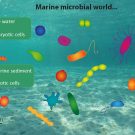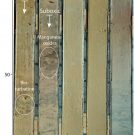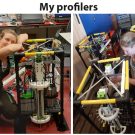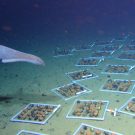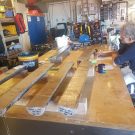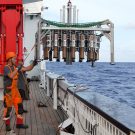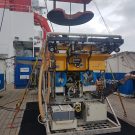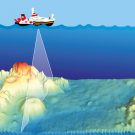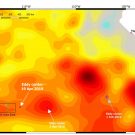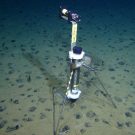The smallest life at the seafloor (Deutsch s.u.) by Batuhan Yapan, MPI and Dr. Julia Otte AWI/MPI The deep sea seems very far away from the perspective of our daily life on land. For comparison, the deep seafloor in the northern Pacific is as far away as the clouds in the sky – about 4000 […]
Hard Rock and Heavy Metal: join the microbial deep-sea party! / Hard Rock und Heavy Metal: eine mikrobielle Tiefseeparty!
by Dr. Julia Otte, AWI and Jessica Volz, AWI (deutsch s. u.) What gravity cores can tell us about the biogeochemistry of the Deep The deep sea has fascinated mankind since the early odysseys across the oceans – many myths have been told about the depths of the sea with the dreaded Kraken and Moby […]
Supervising sensitive deep-sea sensors / Überwachung sensibler Tiefsee-Sensoren
by Elena Schiller, AWI (deutsch s. u.) Essentials of deep-sea research technology: The first thing I learnt upon entering a deep sea technology workshop was “non-corrosive steel is non-corroded on the day of delivery”, which leads me to my first topic: materials. We tend to avoid most metals because seawater is highly corrosive. So we […]
Real or fake? Exploring animal communities associated with natural and artificial polymetallic nodules
by Sabine Gollner and Coral Diaz Recio Lorenzo (Royal Netherlands Institute for Sea Research NIOZ) The growth of the global economy and technological development is increasingly leading to scarcity of certain metals essential for the high-tech industry. Many countries including a number from the EU are currently exploring the potential of deep-sea mineral resource exploitation […]
The taste of sediment
by Henko de Stigter (Royal Netherlands Institute for Sea Research, NIOZ) Until somebody came up with the idea of mining polymetallic nodules from the abyssal depths of the Pacific Ocean, this place was one of the remotest and quietest on our planet. Far away from the brute natural forces of storms, floods, landslides, tsunamis and […]
A small world between grains / Eine kleine Welt zwischen den Sandkörnern
by Dr. Sven Rossel, Katja Uhlenkott und Ann-Kathrin Weßel (deutsch s.u.) “Ah, you’re playing with mud again.” That is something biologists and geologists hear quite often on board. And yes, we are one of the parties “playing with mud”. But actually we, the biologists from Senckenberg, German Centre for Marine Biodiversity Research, are not interested […]
The ROV on board SONNE 268
The largest and probably most expensive scientific equipment on board of RV SONNE on the present leg is a remotely operated deep-diving “robot” called ROV KIEL 6000. “ROV” is the abbreviation for “Remotely Operated Vehicle”. The ROV provides “eyes and arms in the deep sea”. ROV KIEL 6000, which got its name from the city […]
Mapping the seafloor/Die Kartierung des Meeresbodens
(Deutsche Version unten) How do you plan research that is to be conducted at the seafloor in 4000 meter water depth? How do you choose the locations for your studies in a large area that you may not know much about yet? How do you pick the best spot to deploy sensors? – Which path […]
Wer ist eigentlich Eddy?/Who actually is Eddy?
(English version below) Das war eine häufige Frage an Bord zu Beginn unserer Forschungsfahrt. Denn das „Eddy“ Teil unserer wissenschaftlichen Untersuchungen wird, ergab sich relativ kurzfristig. Eddies sind temporäre Wasserwirbel mit einem Durchmesser von mehreren hundert Kilometern, die lange Strecken durch den offenen Ozean zurücklegen können, bevor sie sich irgendwann auflösen. Sie können von der […]
BOBO and the 7 (+7) dwarfs: How to sense the deep sea
by Sabine Haalboom (NIOZ) The first half of the cruise has passed and we’ve finished the baseline studies in the Belgian license area. Doing my PhD research in marine geology at the Royal Netherlands Institute for Sea Research (NIOZ), my main interest is the particle dynamics in the bottom boundary layer (i.e. the layer close […]
